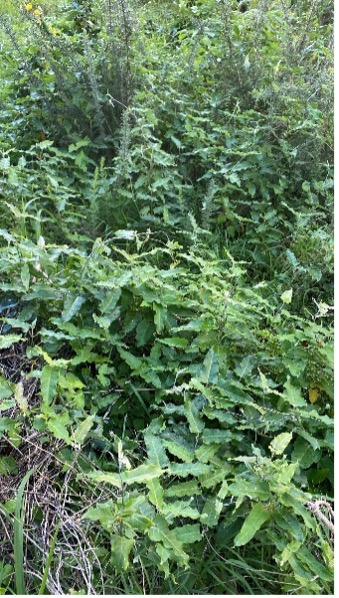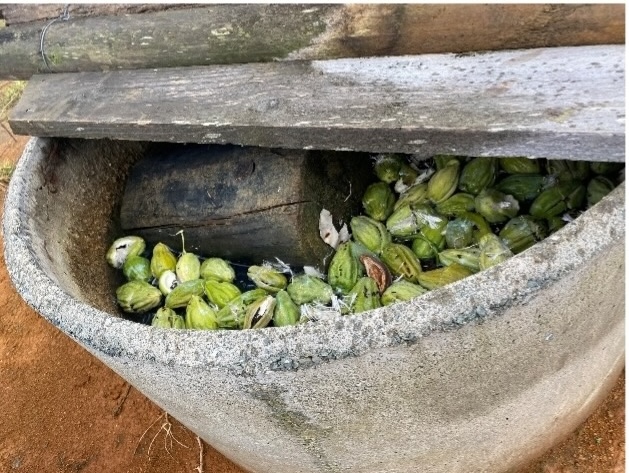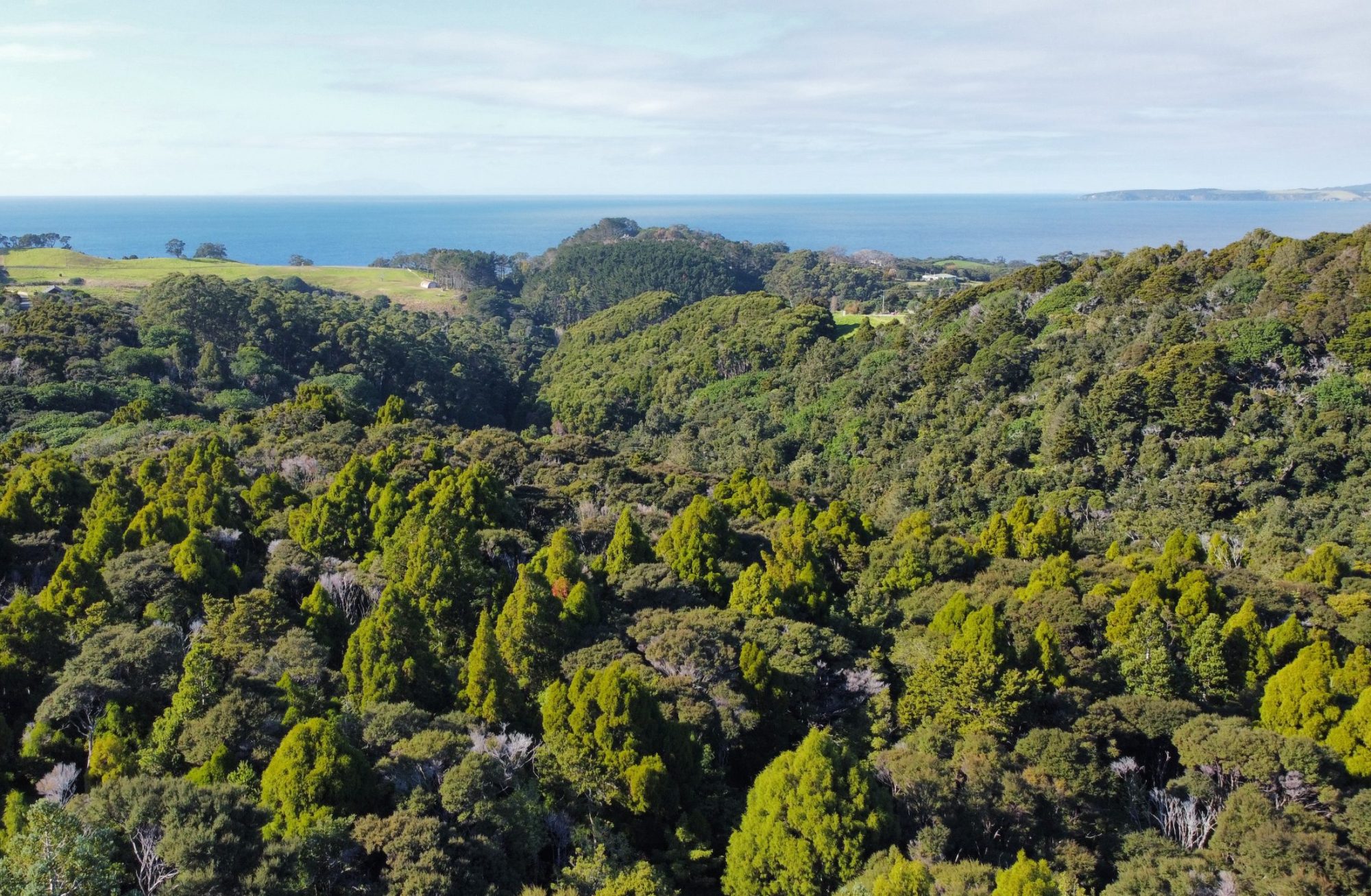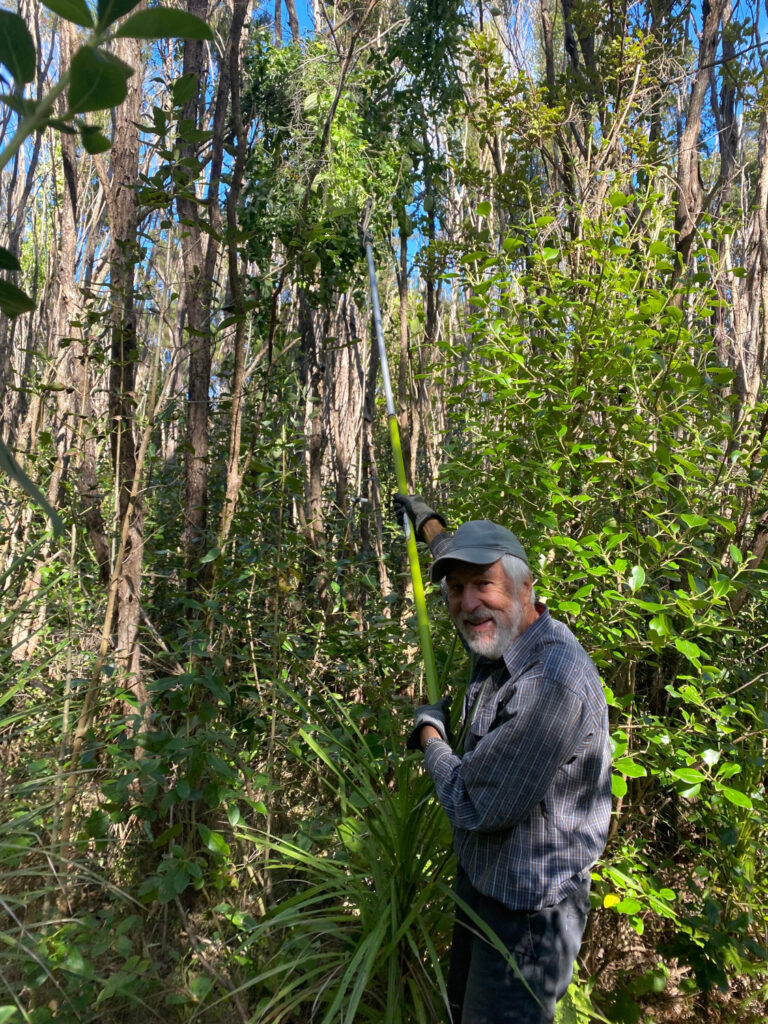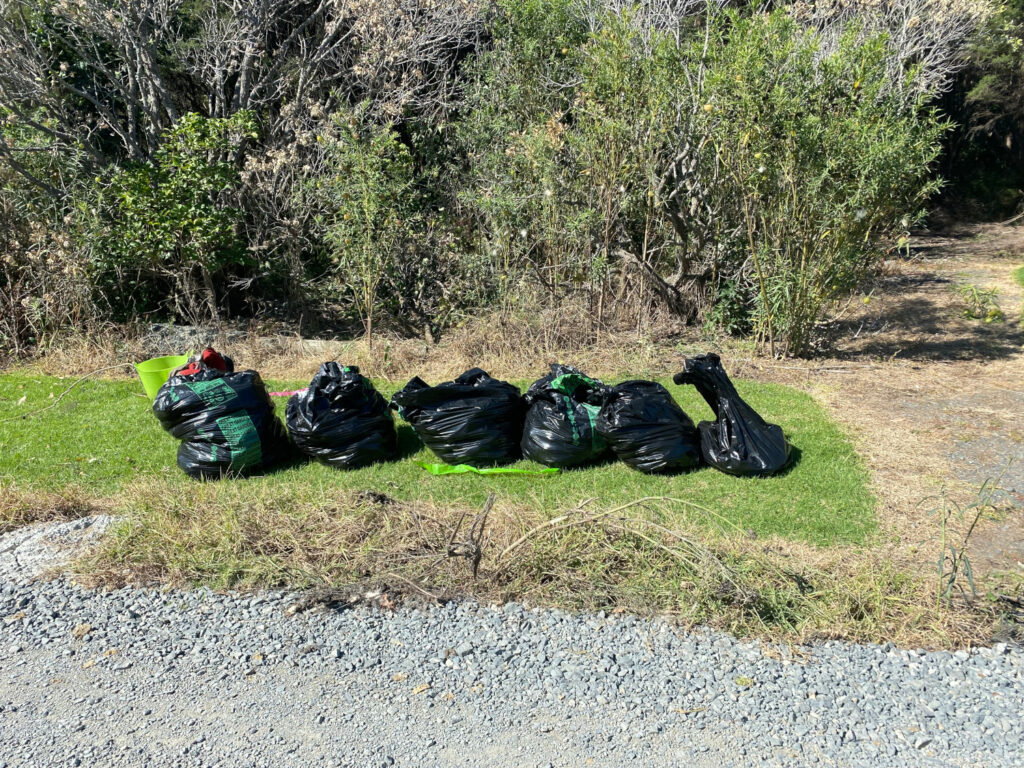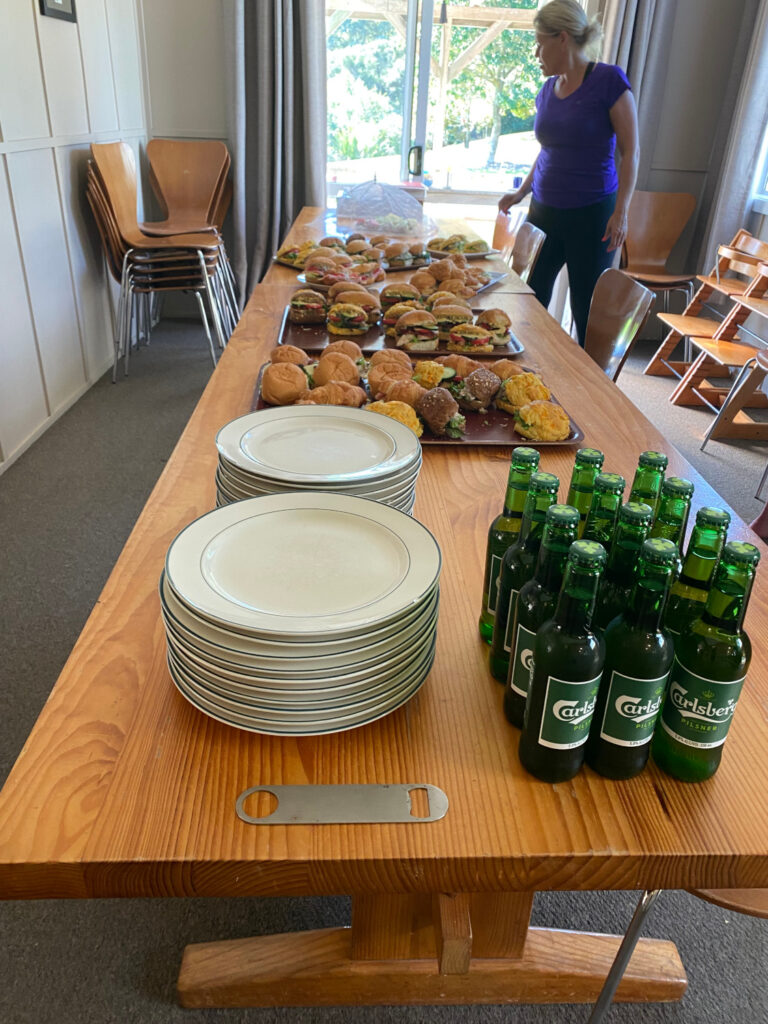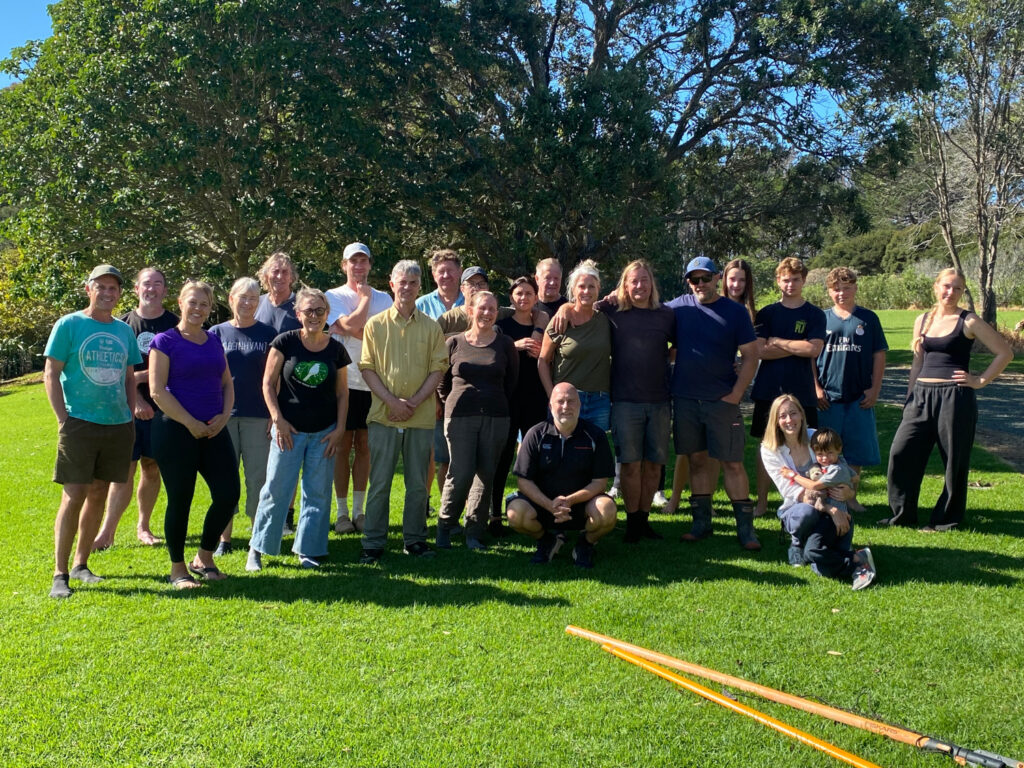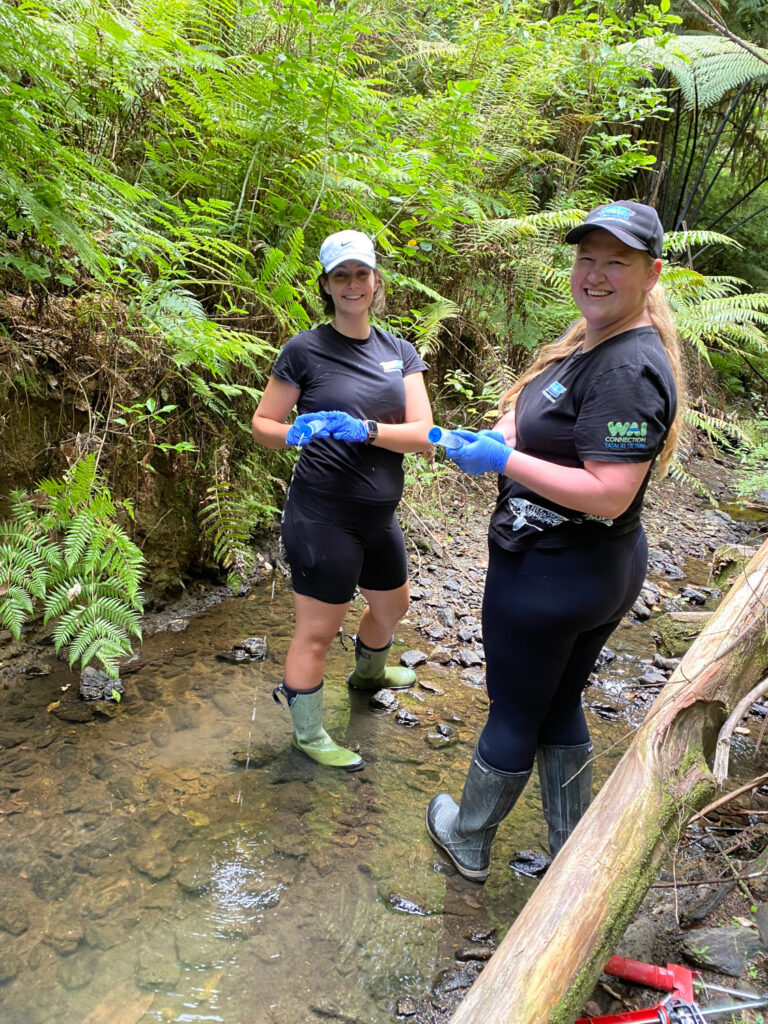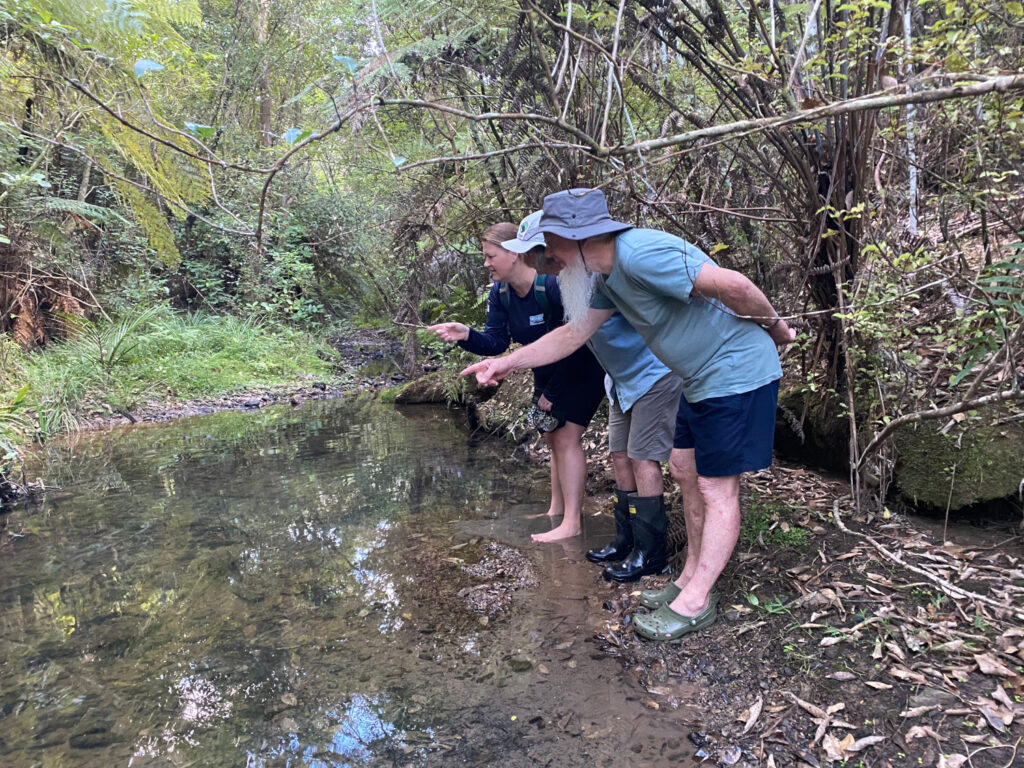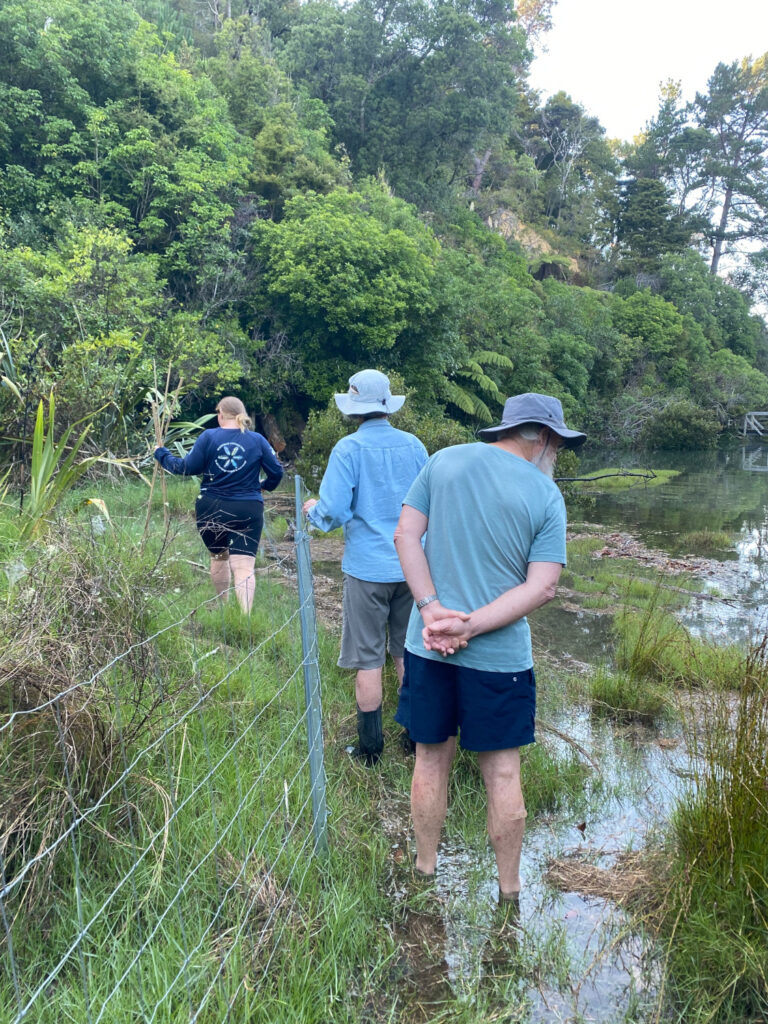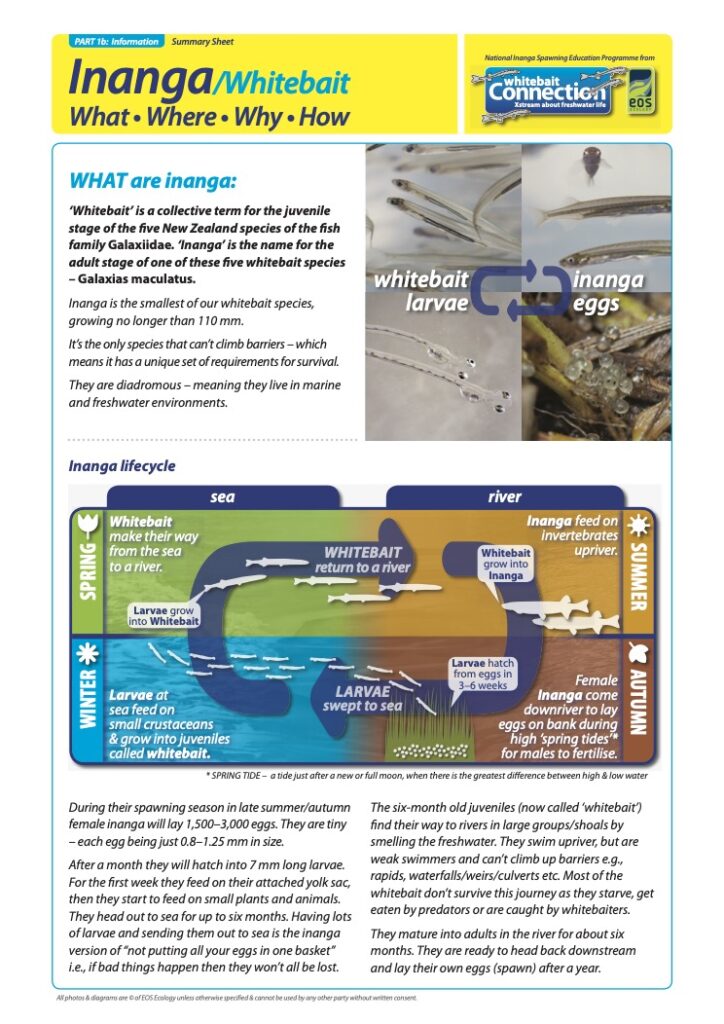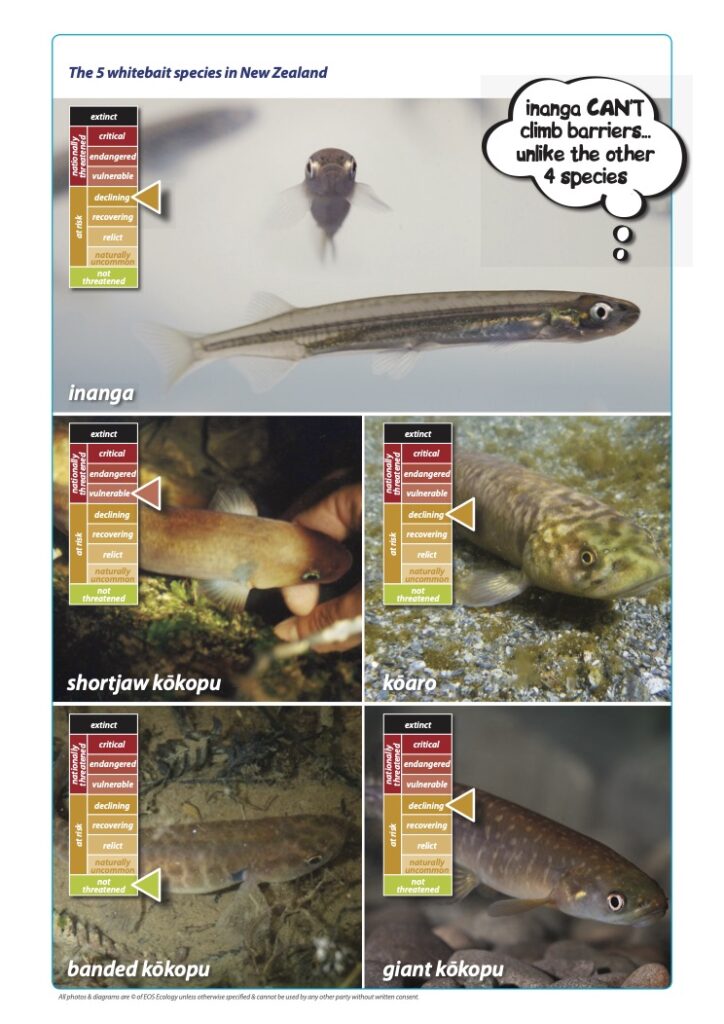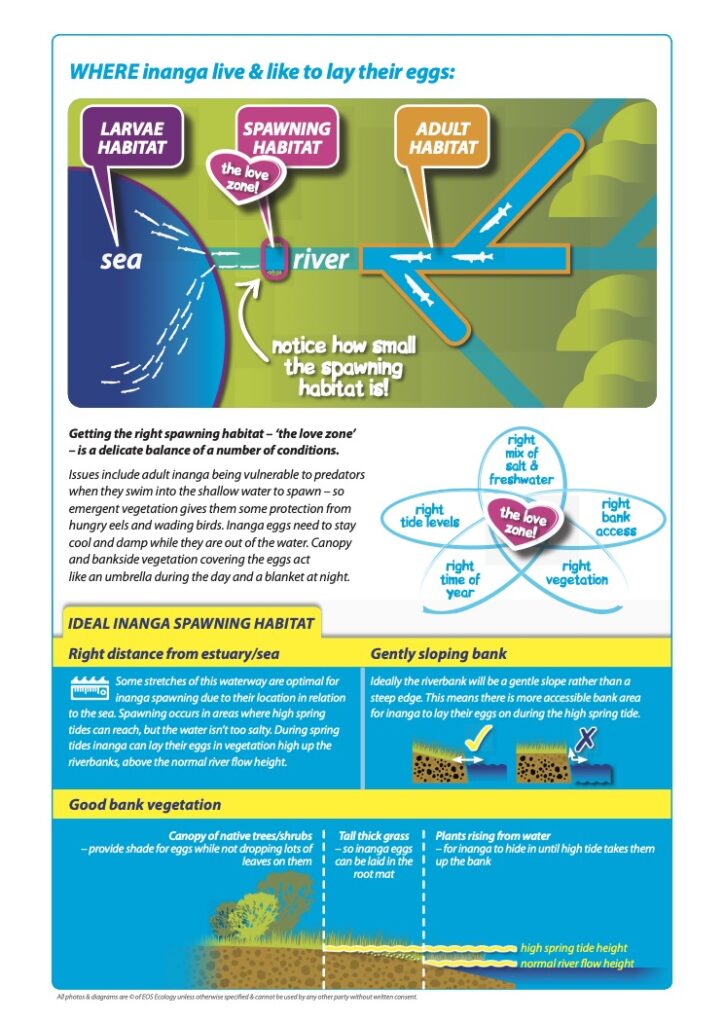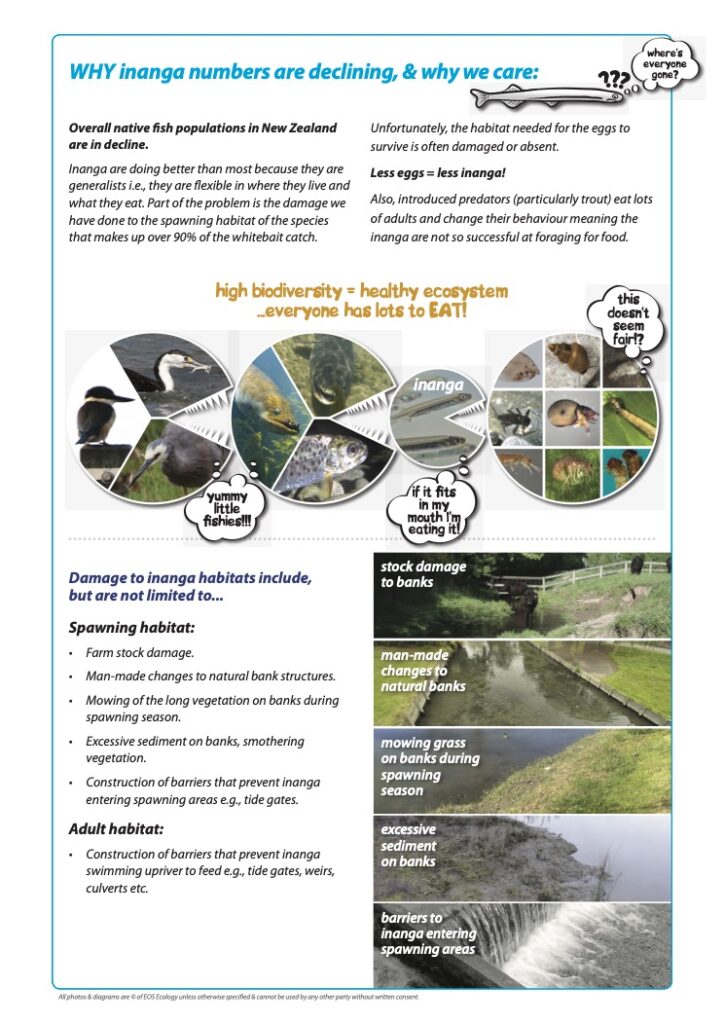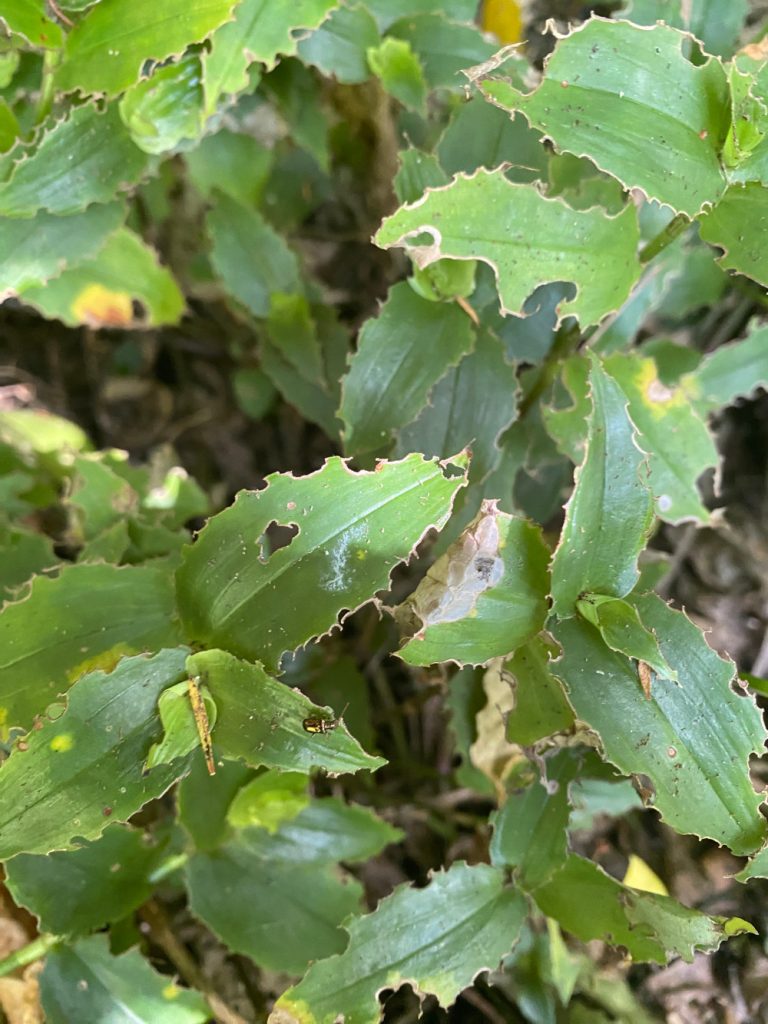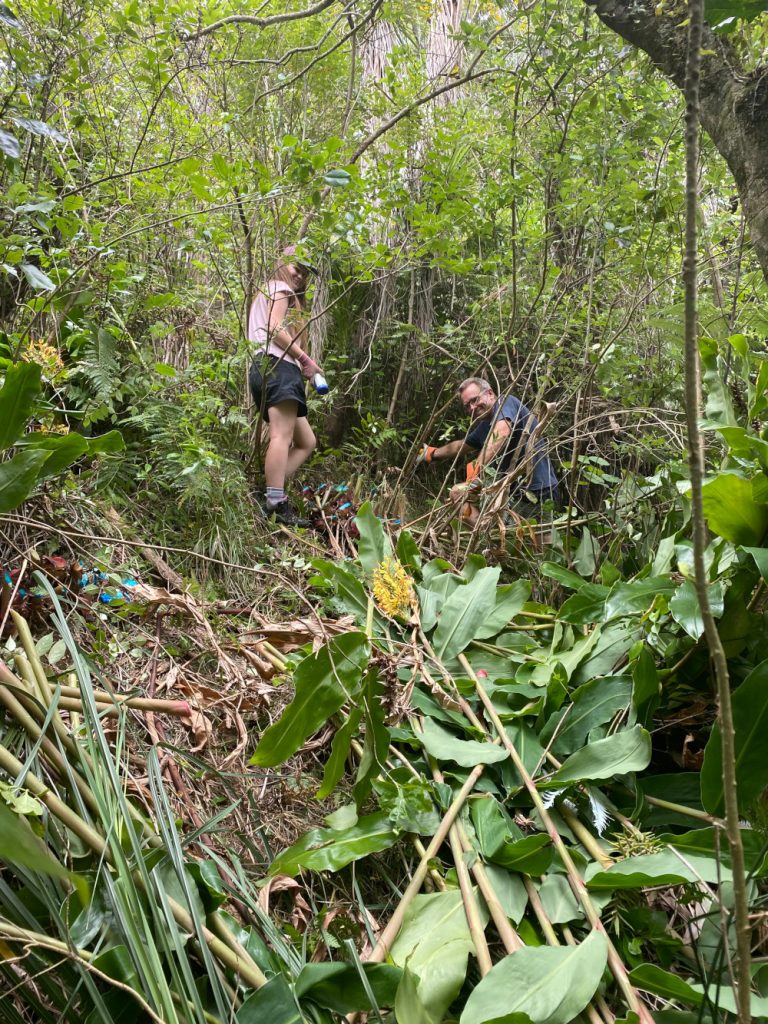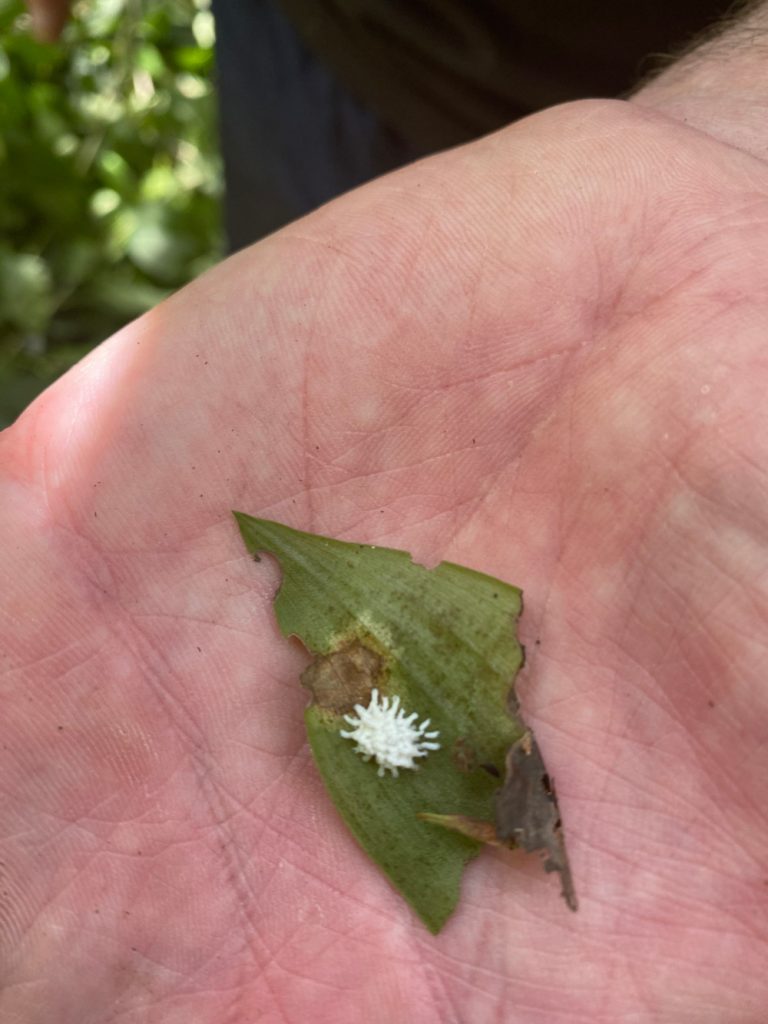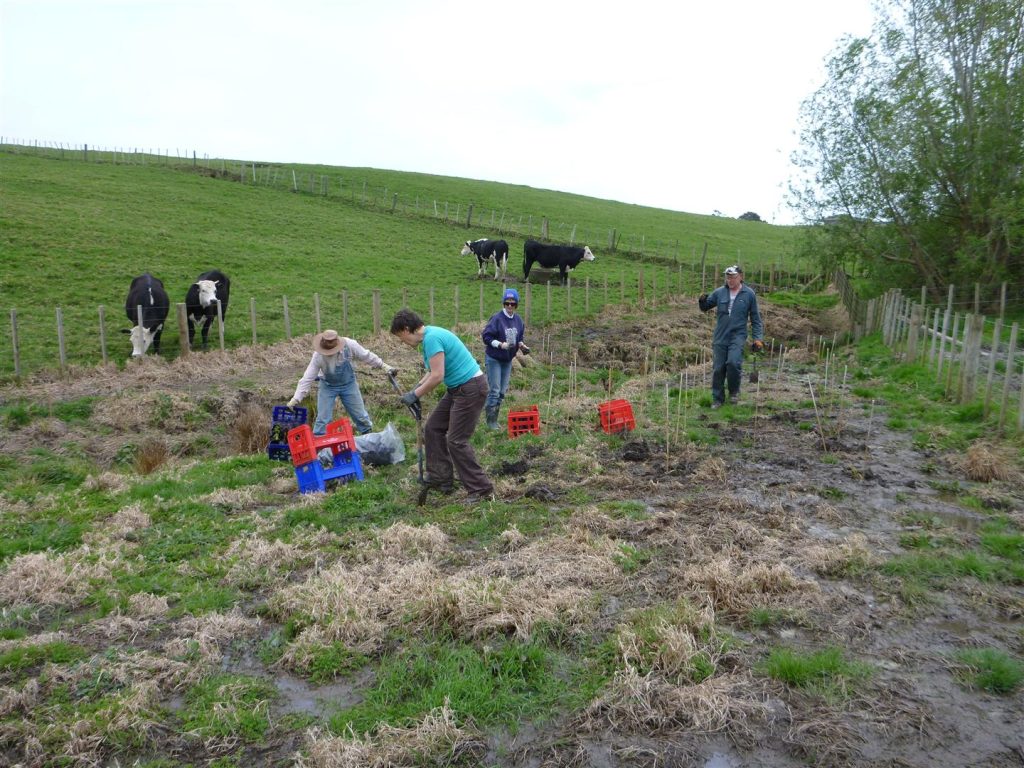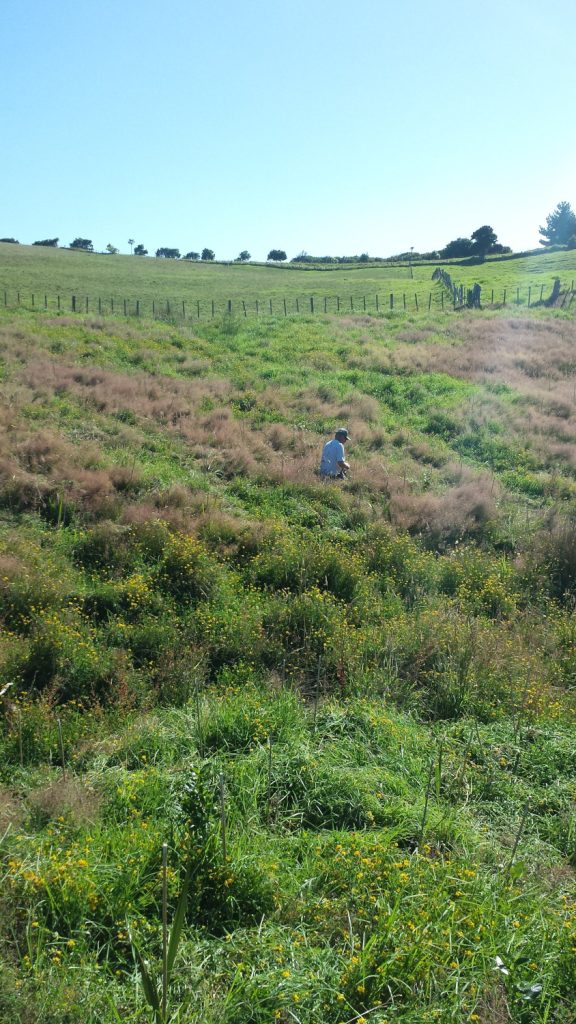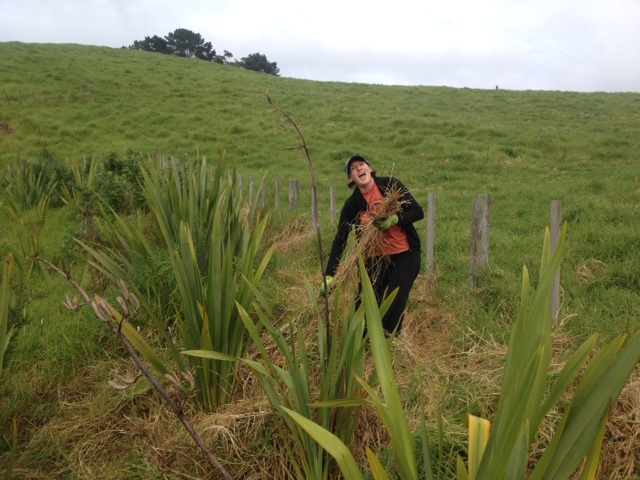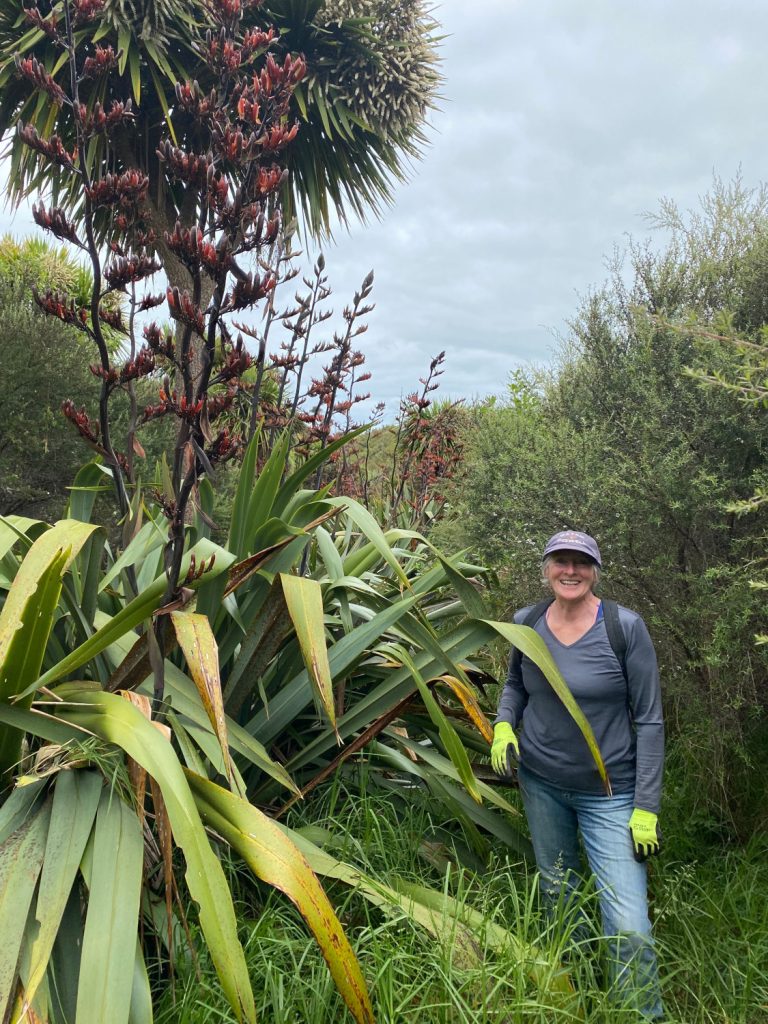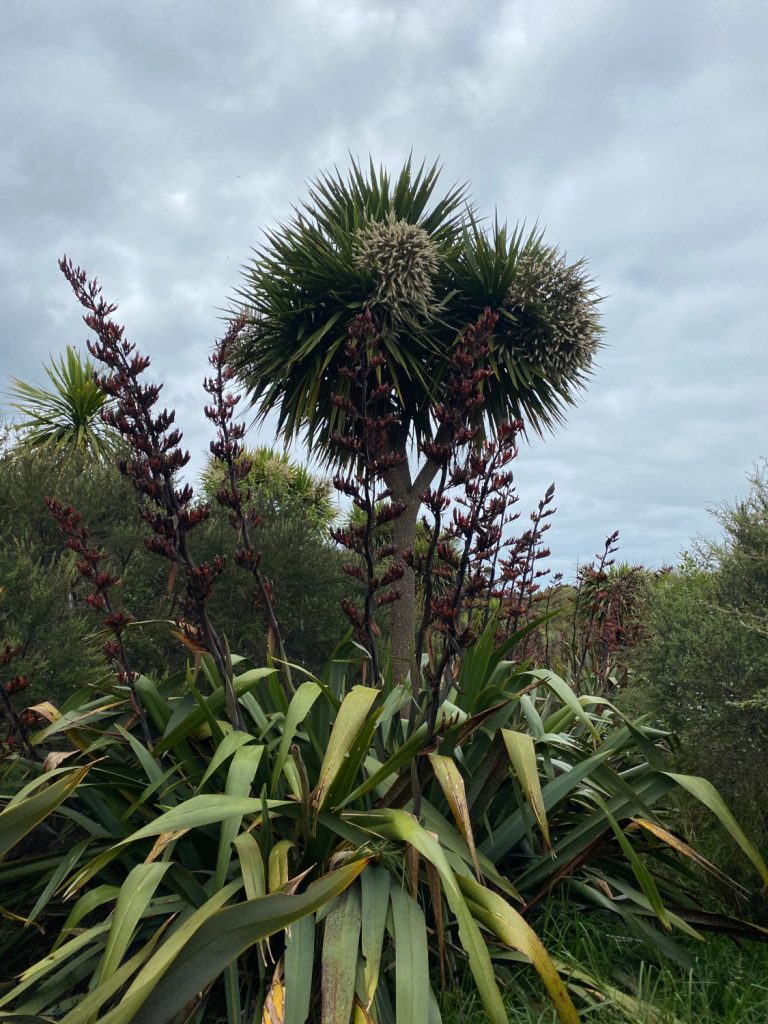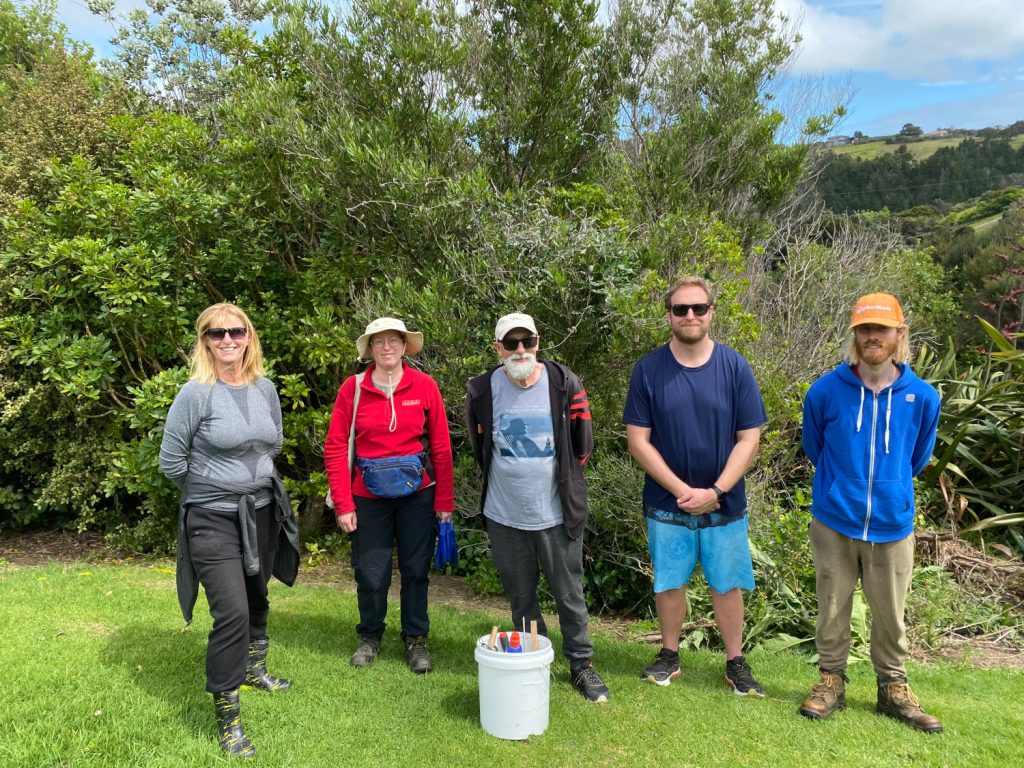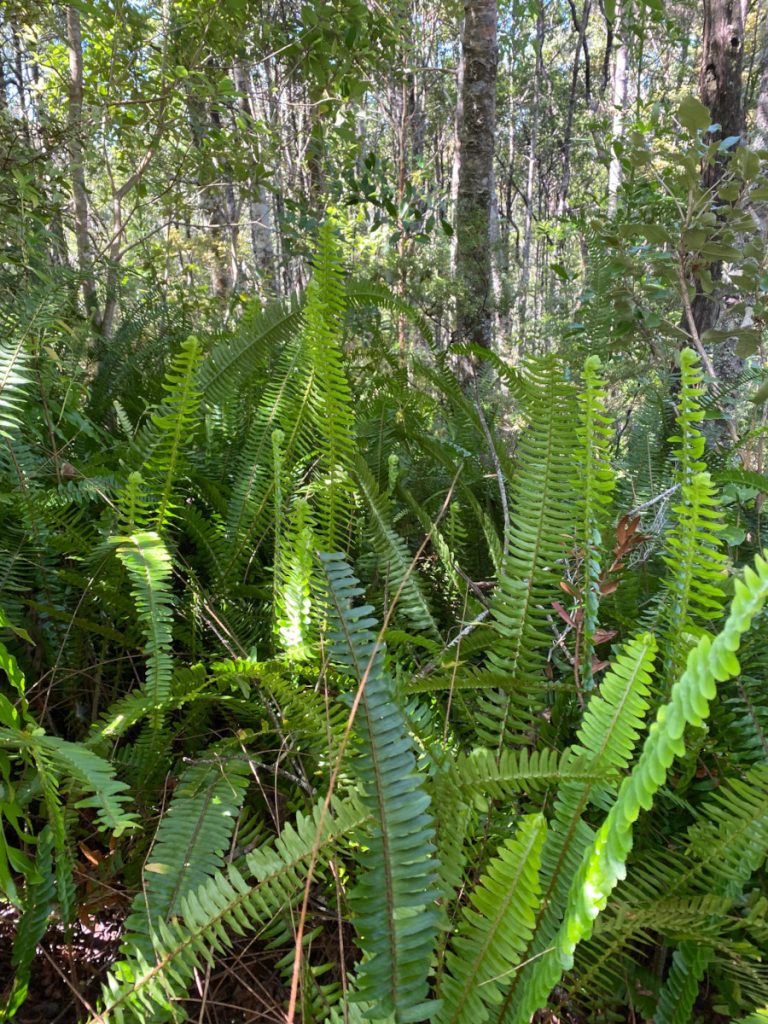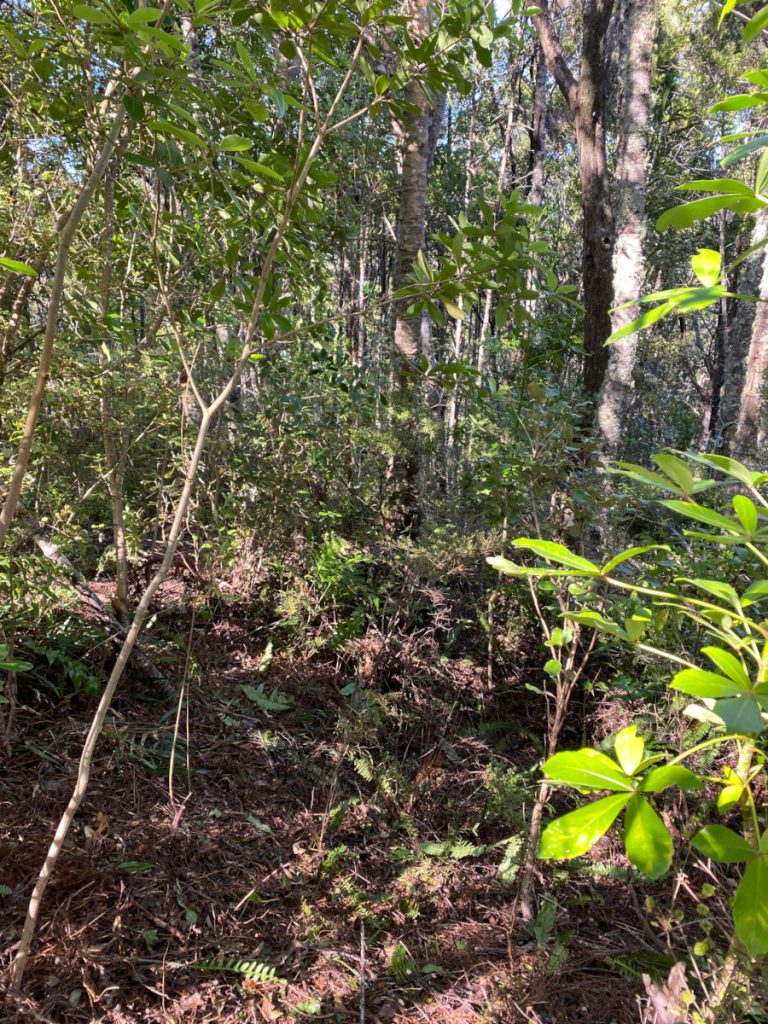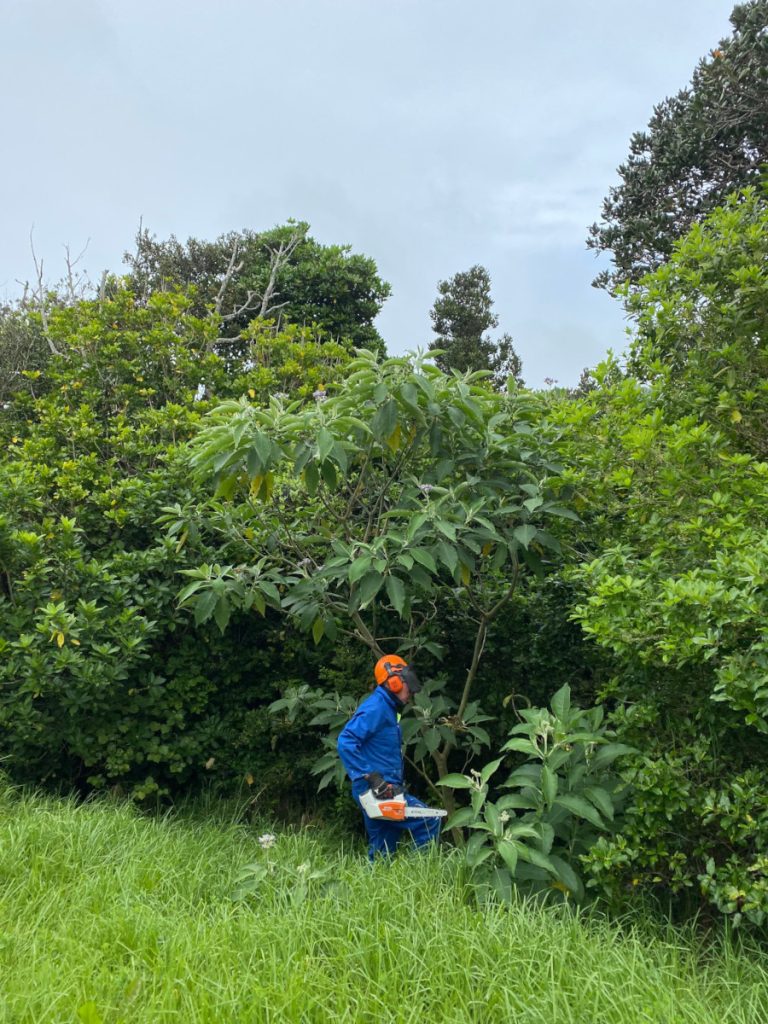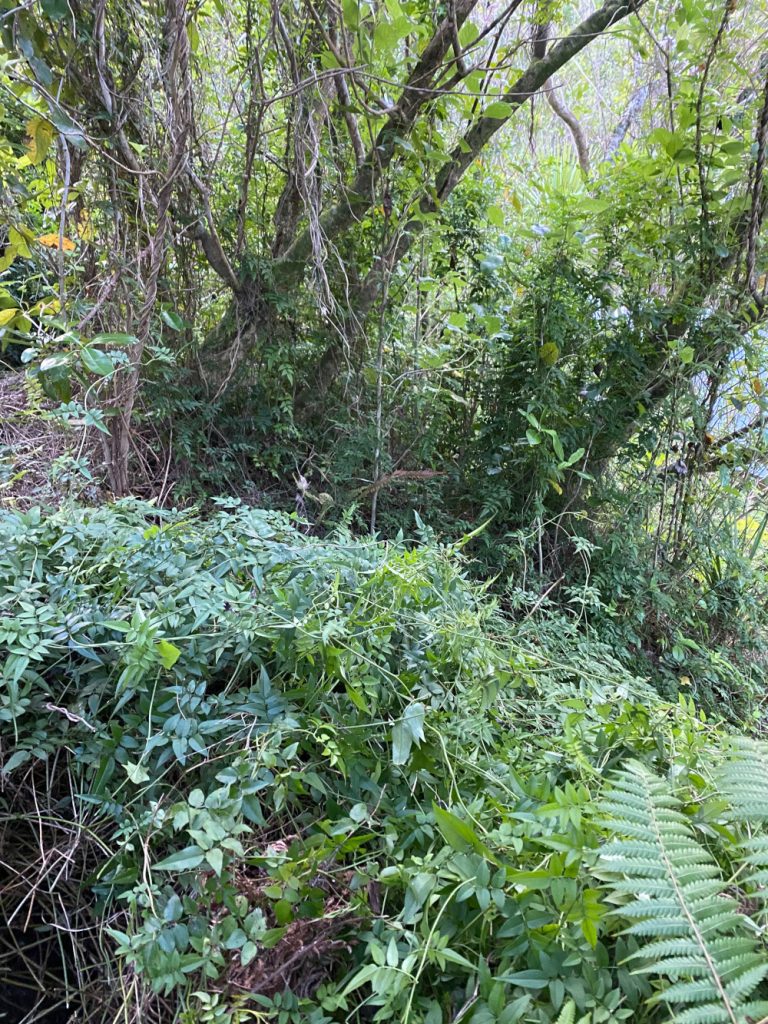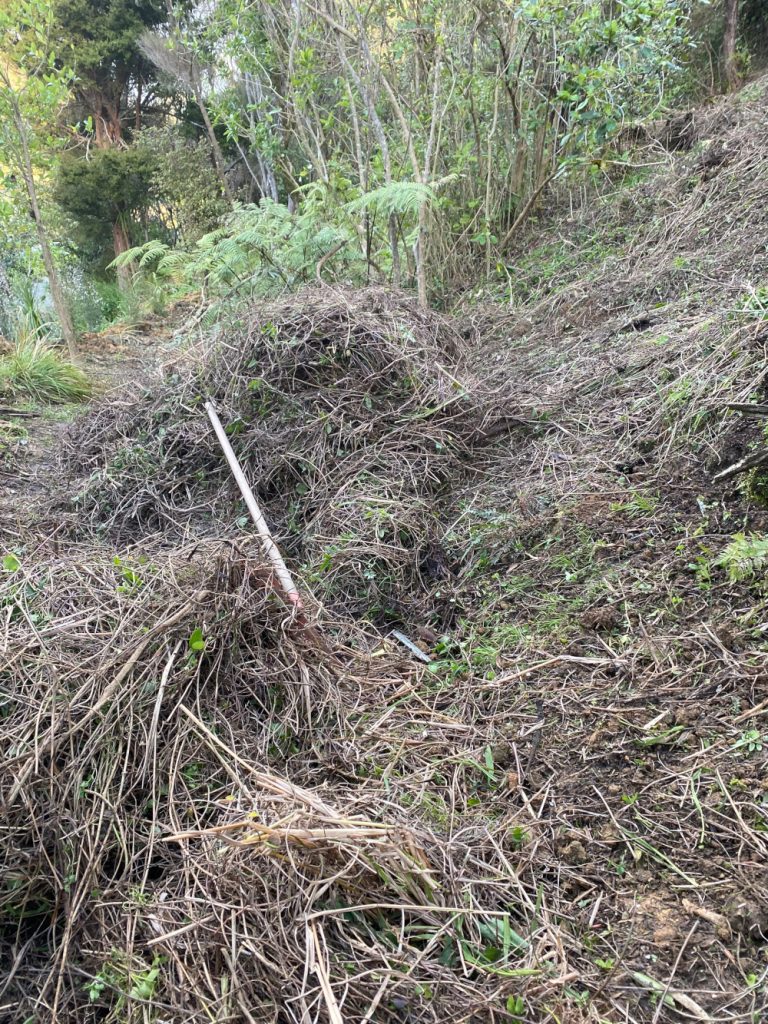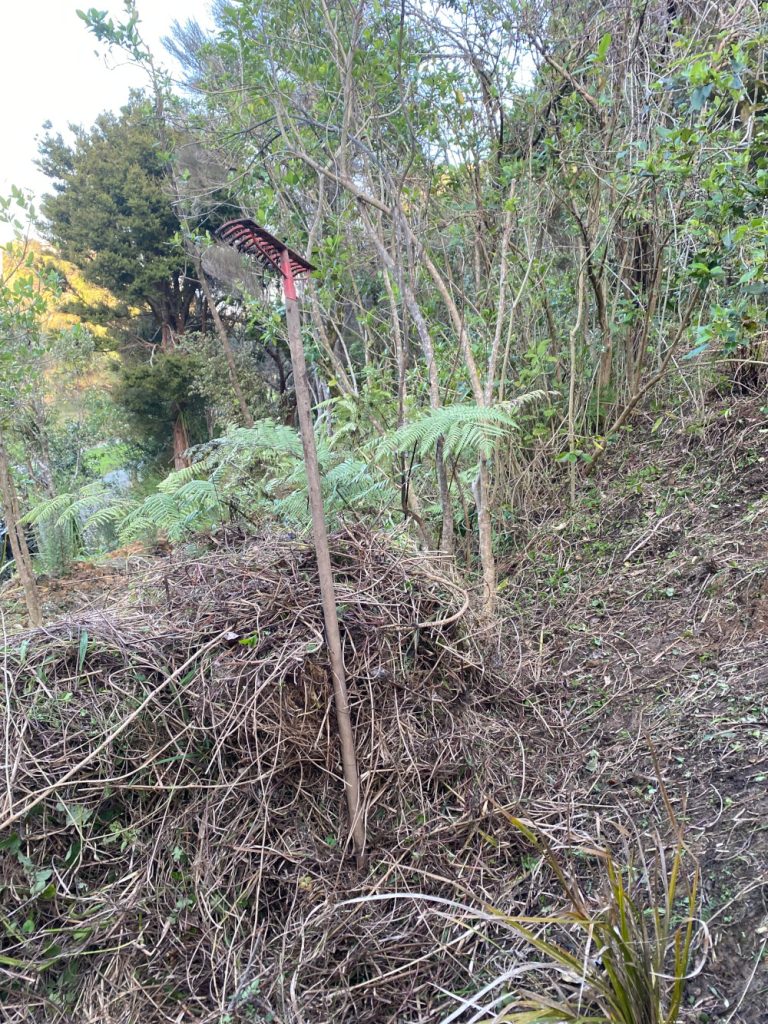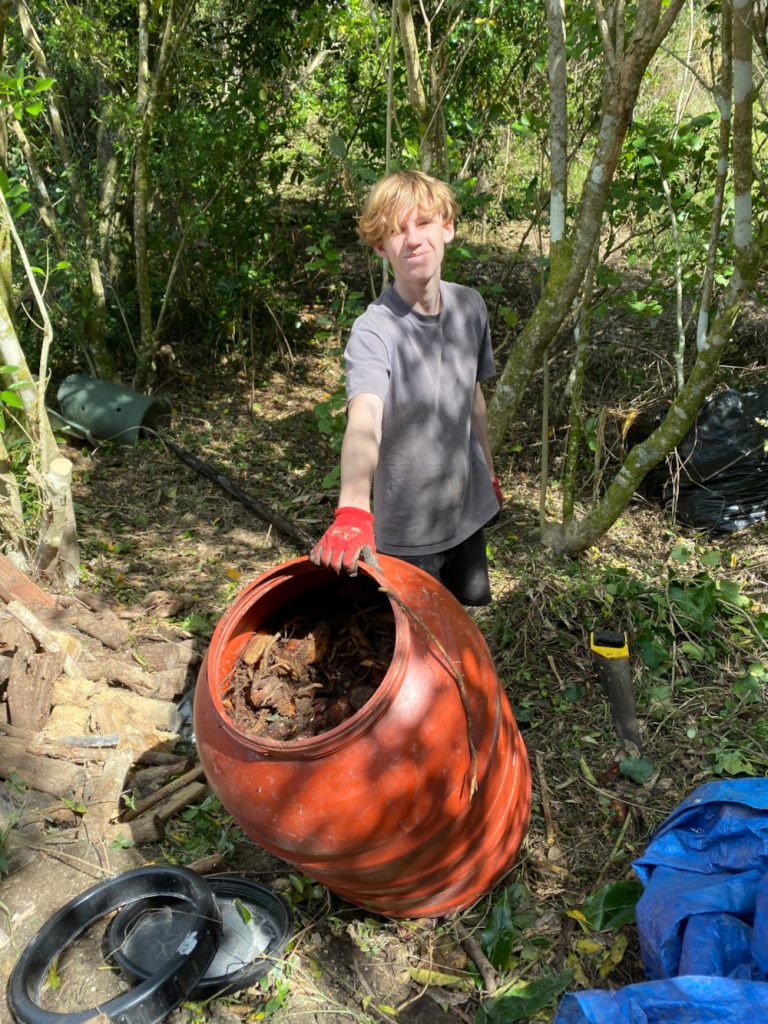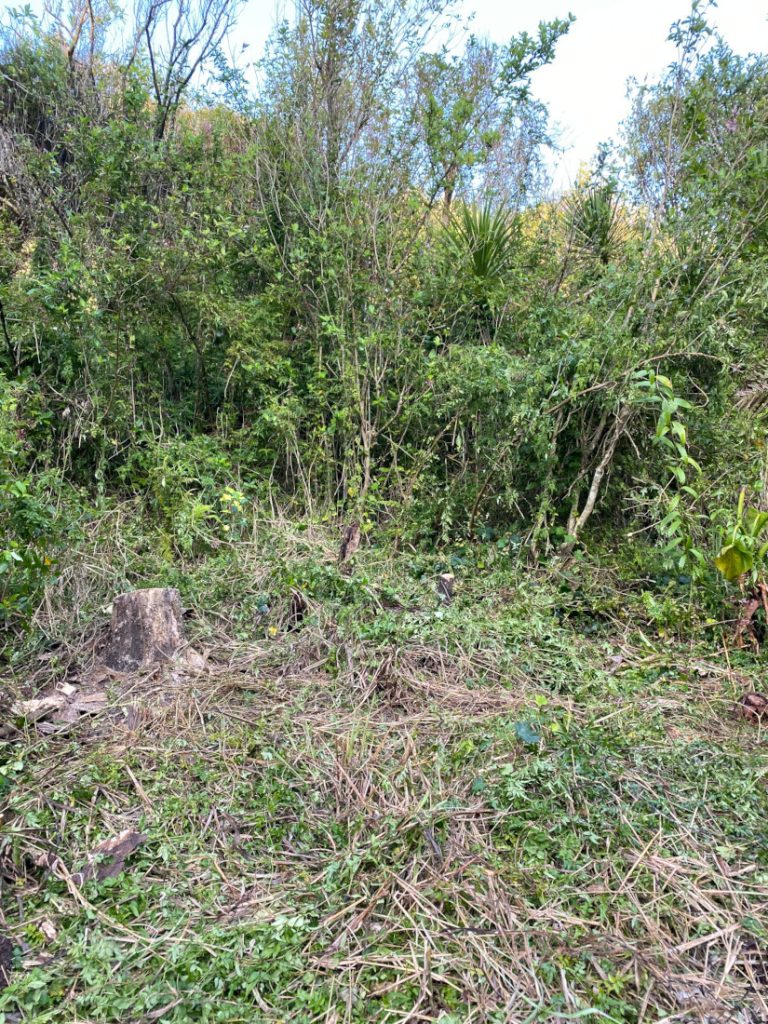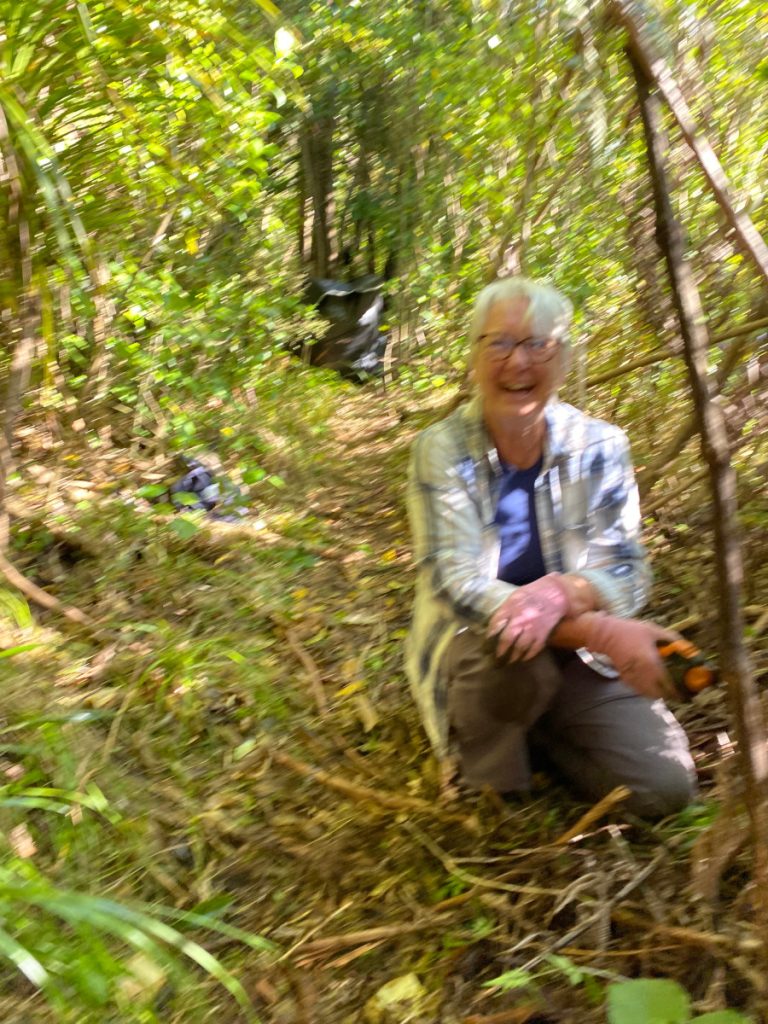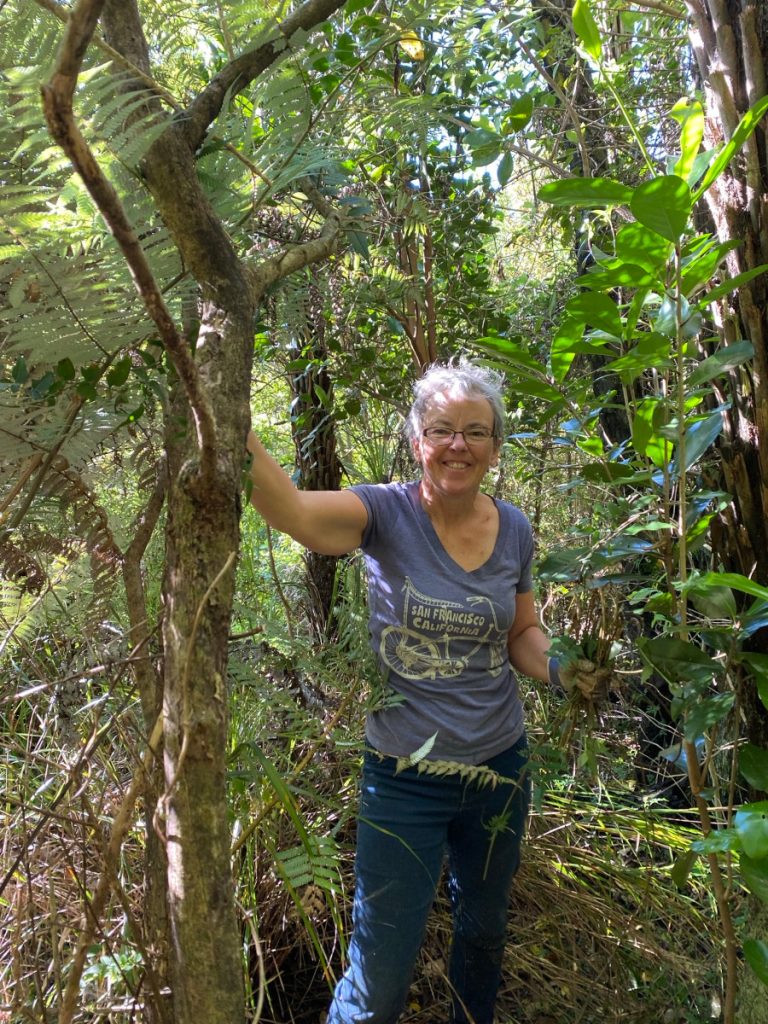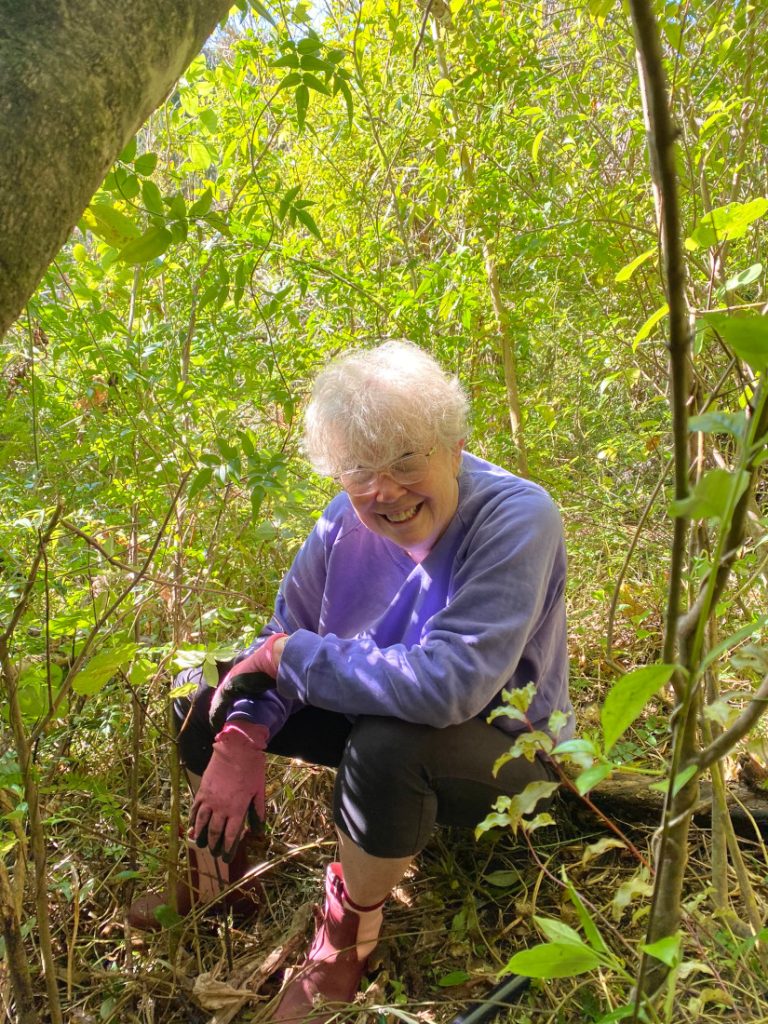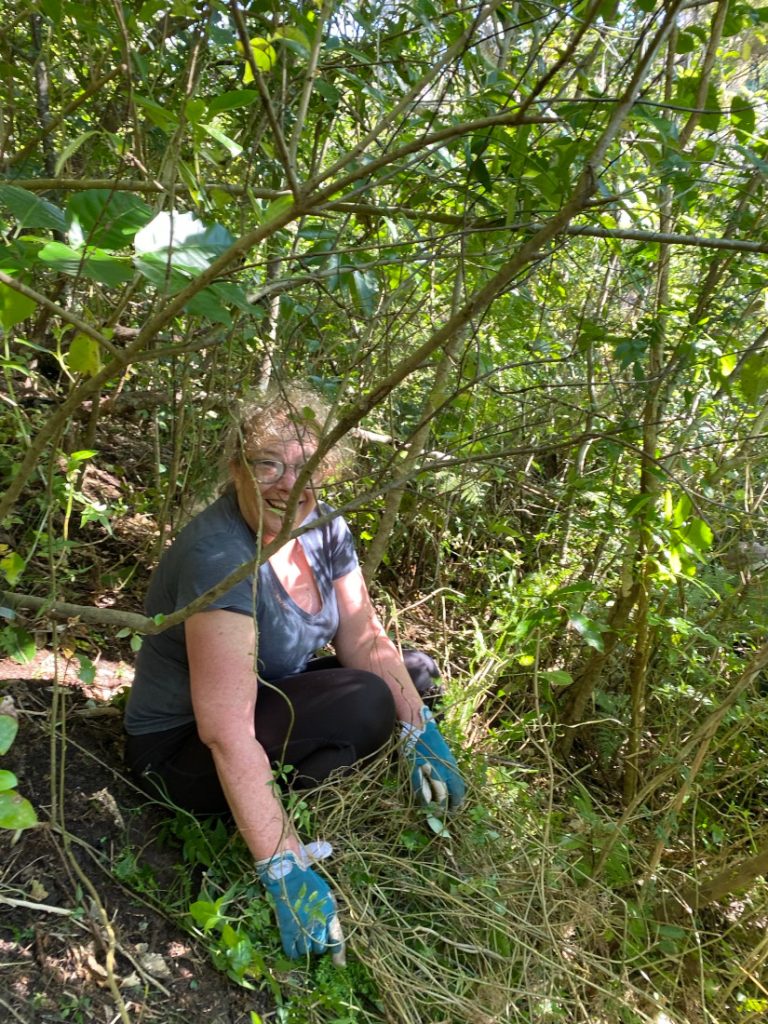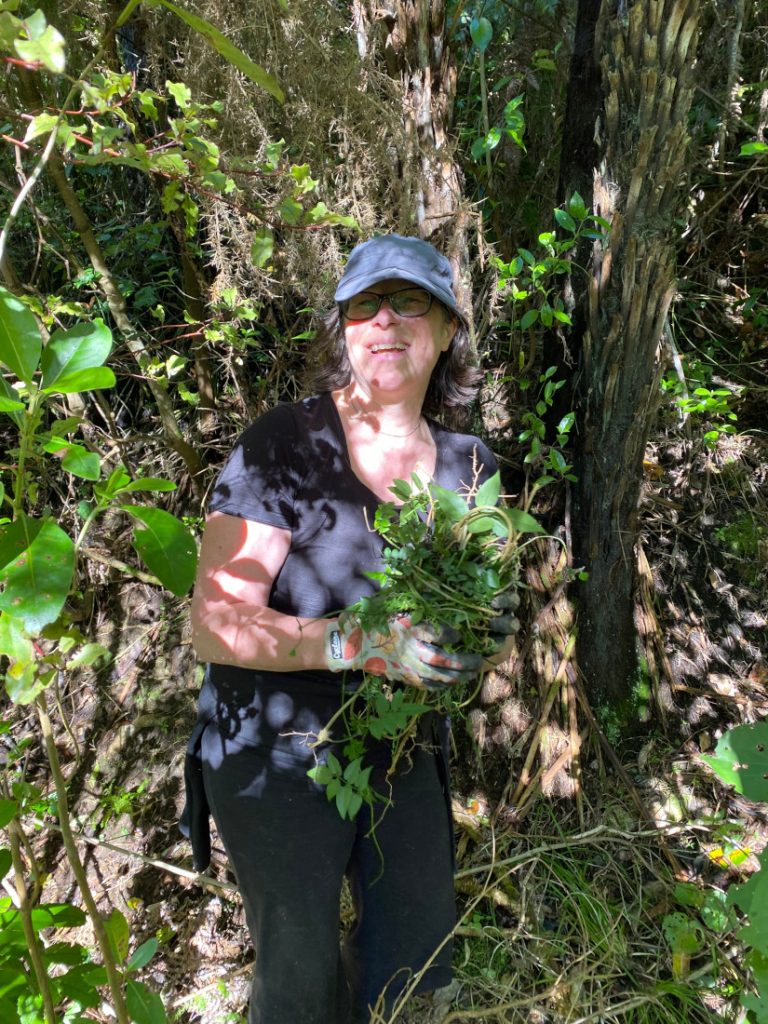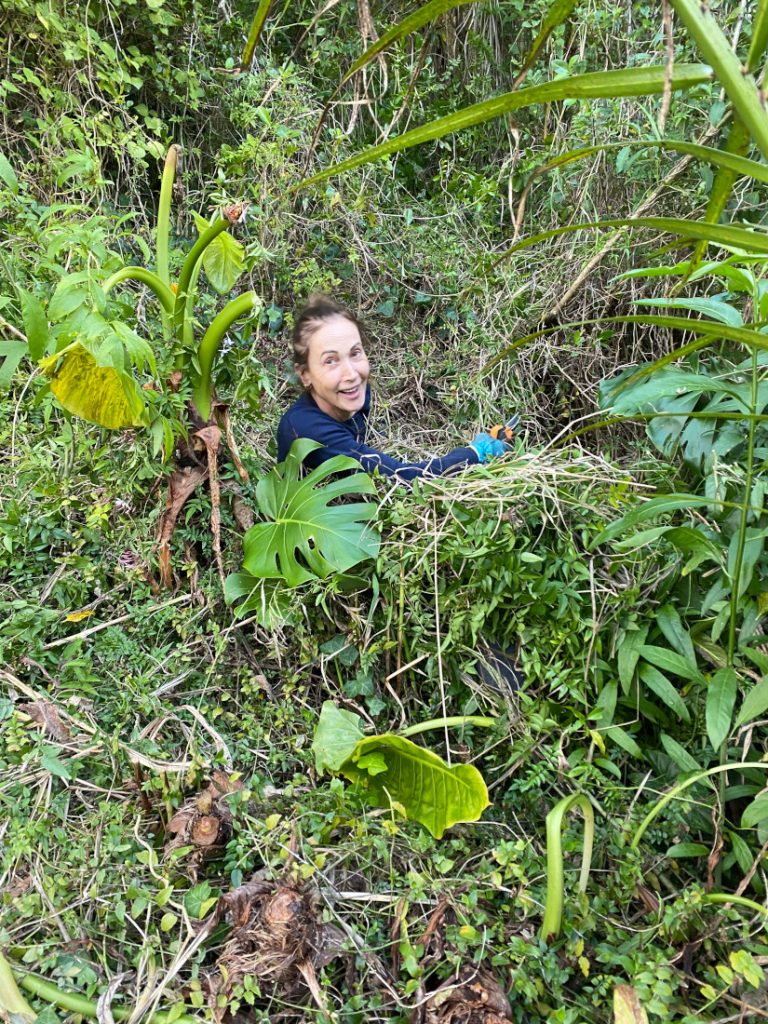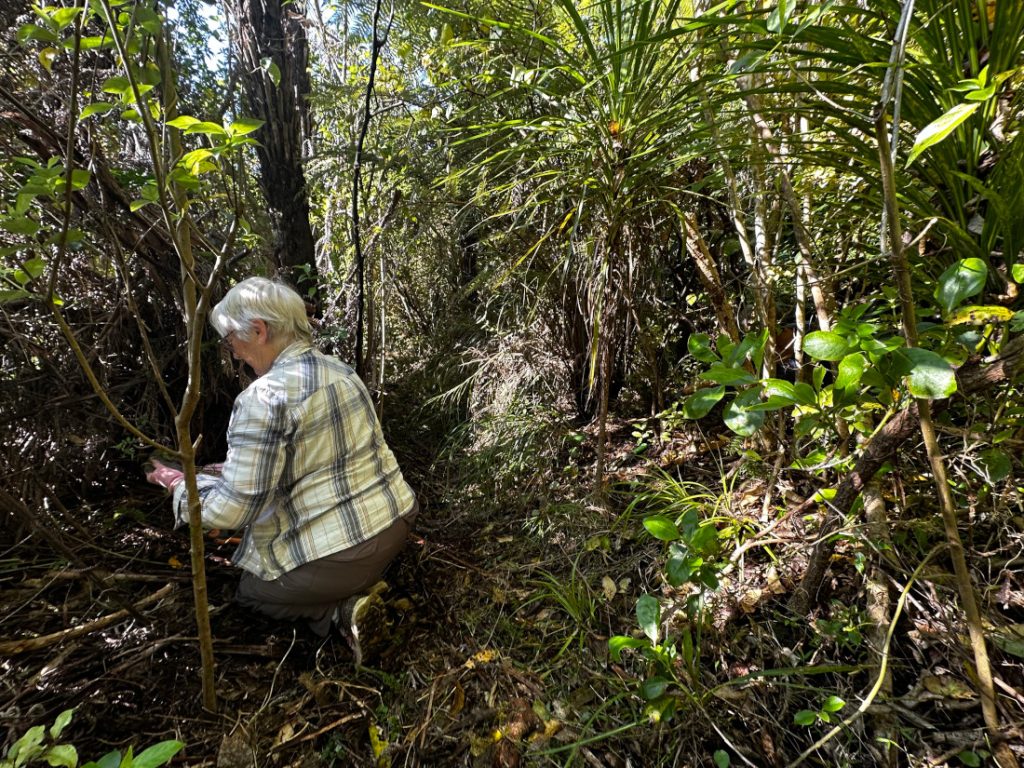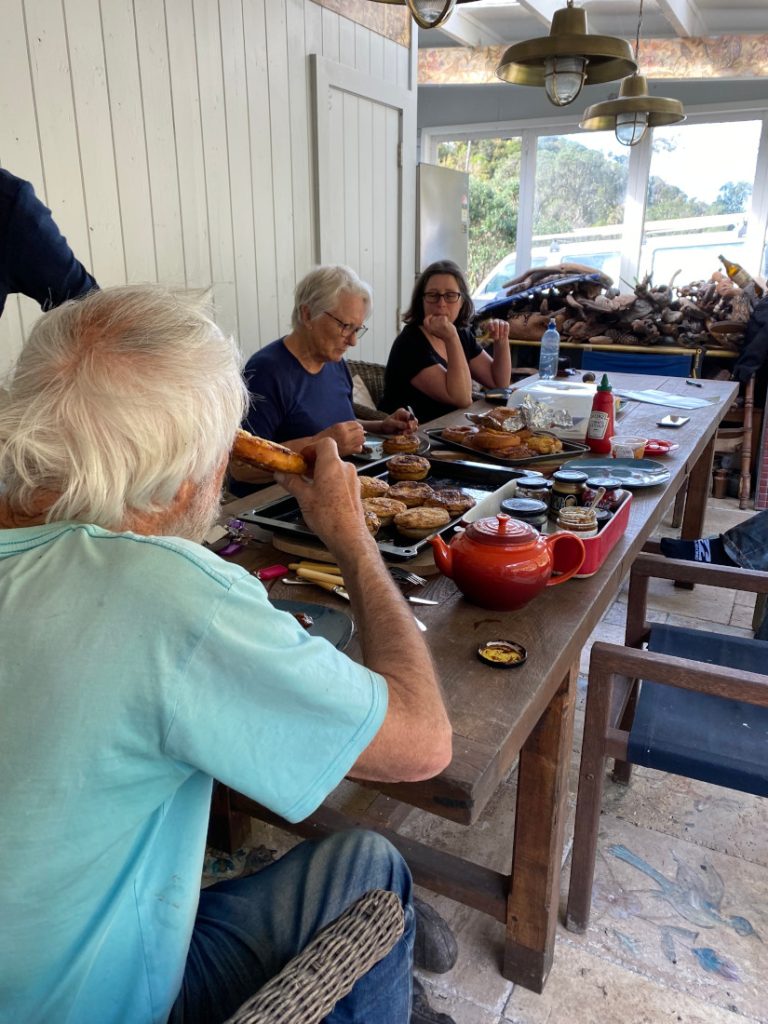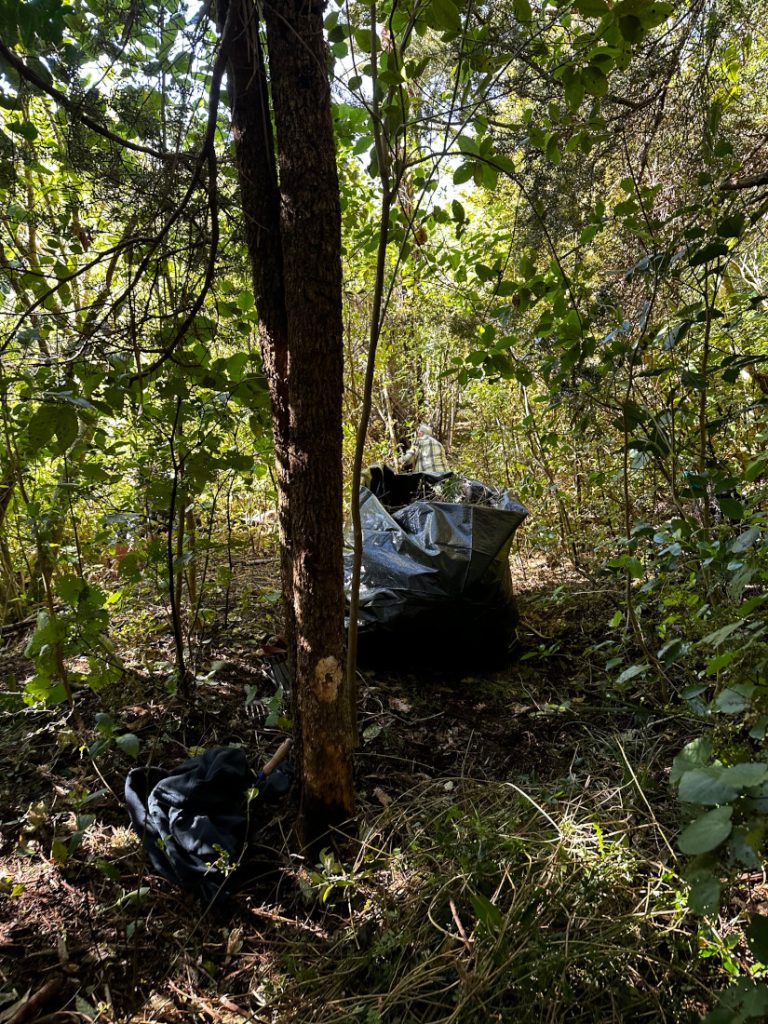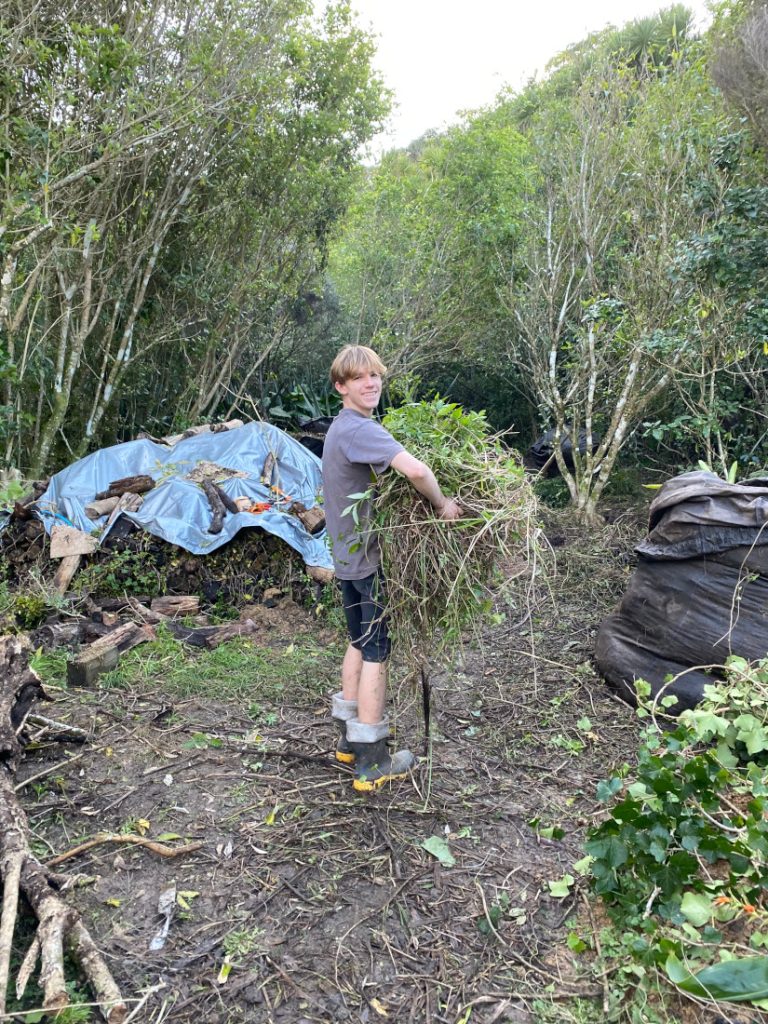Damian Moody, who hails from Lancashire, the windy north west of England, wasn’t deterred by the cold and blustery conditions when we teamed up on Sunday, 15 June to carry out much needed moth plant control on properties bordering the Mathesons Bush Road bush block.
An experienced trapper and volunteer for Tawharanui Open Sanctuary Society, Damian has been managing the trapping and baiting in the Mathesons Bush block for the past 12 months, as well as carrying out weed control along the trap lines.
We have previously used a plastic drum filled with water to dispose of ginger rhizomes. Damian has tried a slightly different approach to get rid of moth plant pods. After puncturing and bursting the pods to help them break down faster – they were put in a cattle trough filled with water and a lid made from planks of wood was placed on top. A 10-gallon drum was also used for the same purpose. Hopefully, this method will turn the pods into a nutrient-rich slurry, serving as an excellent fertilizer for recently planted areas during the drier months.
Moth plant continues to appear in many places, and we are determined to eliminate as many vines as possible before they flower and the cycle begins all over again.

